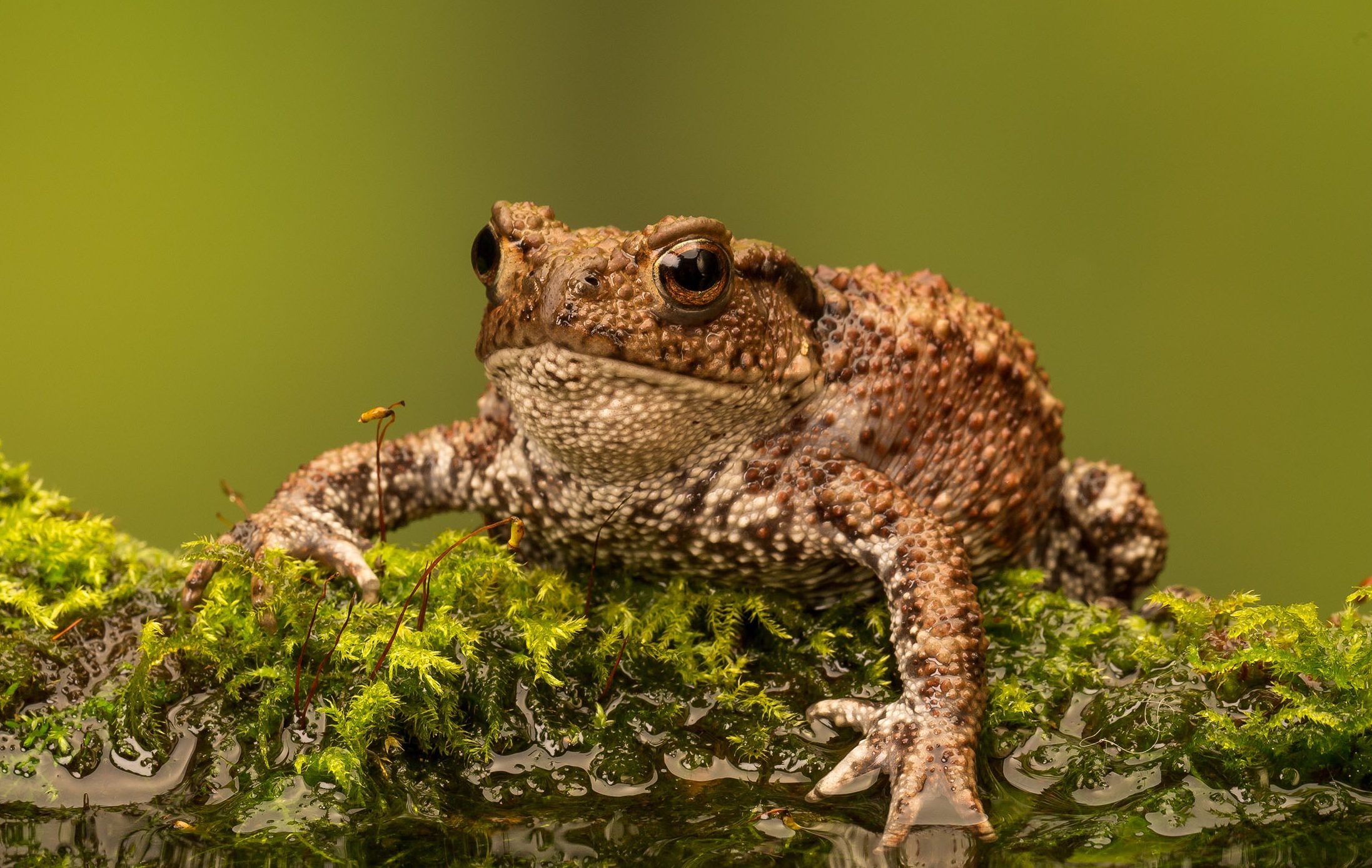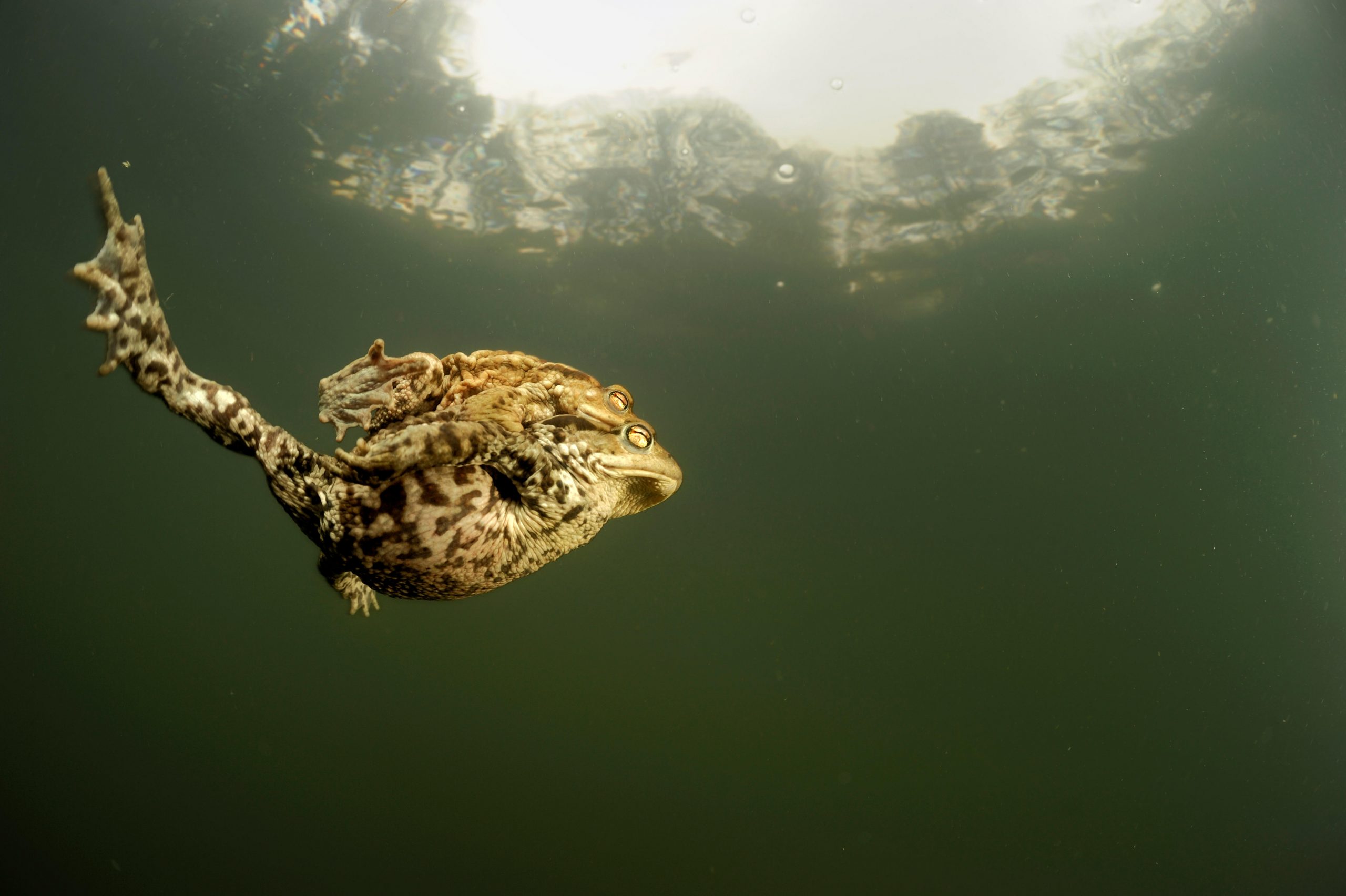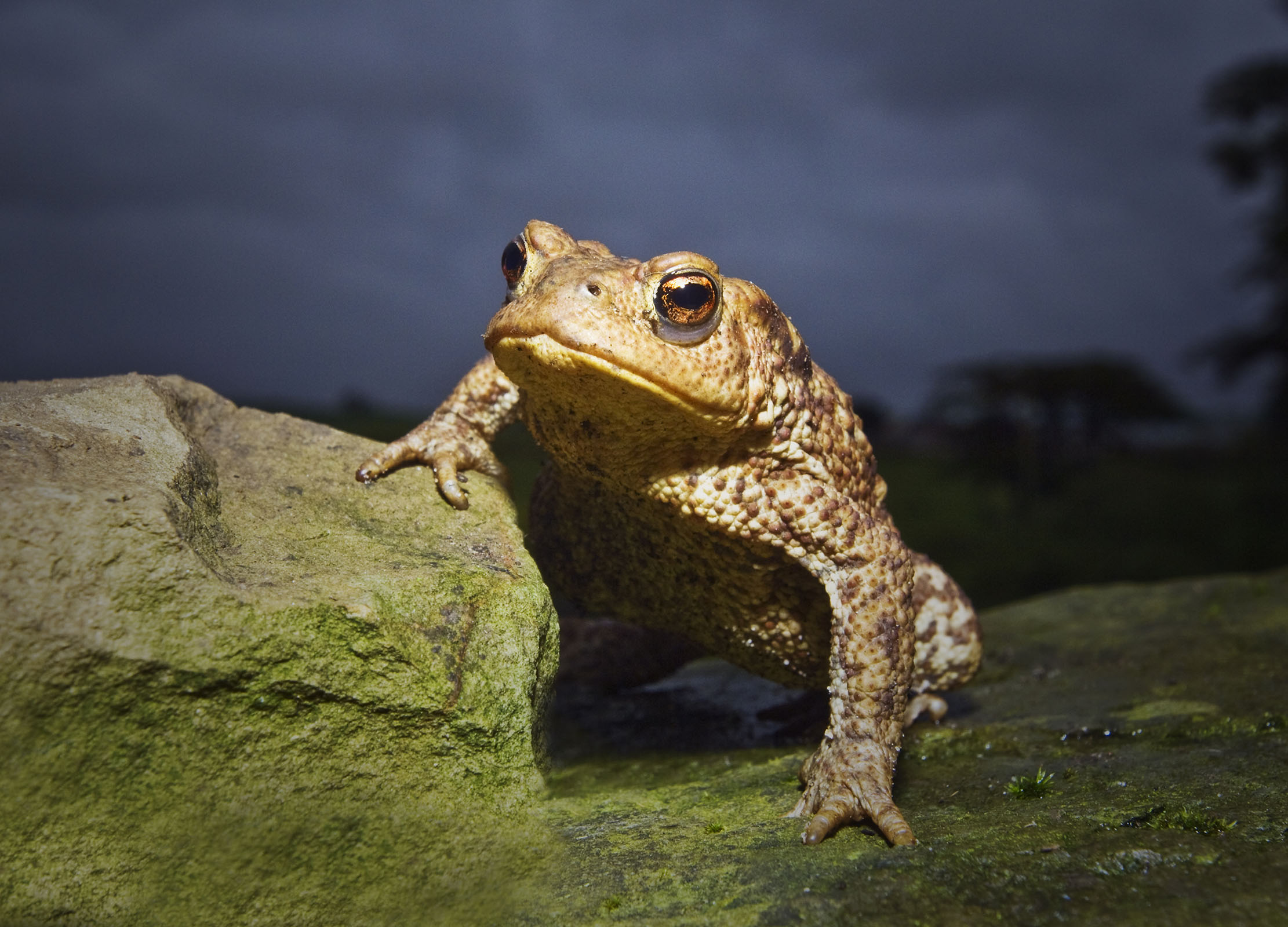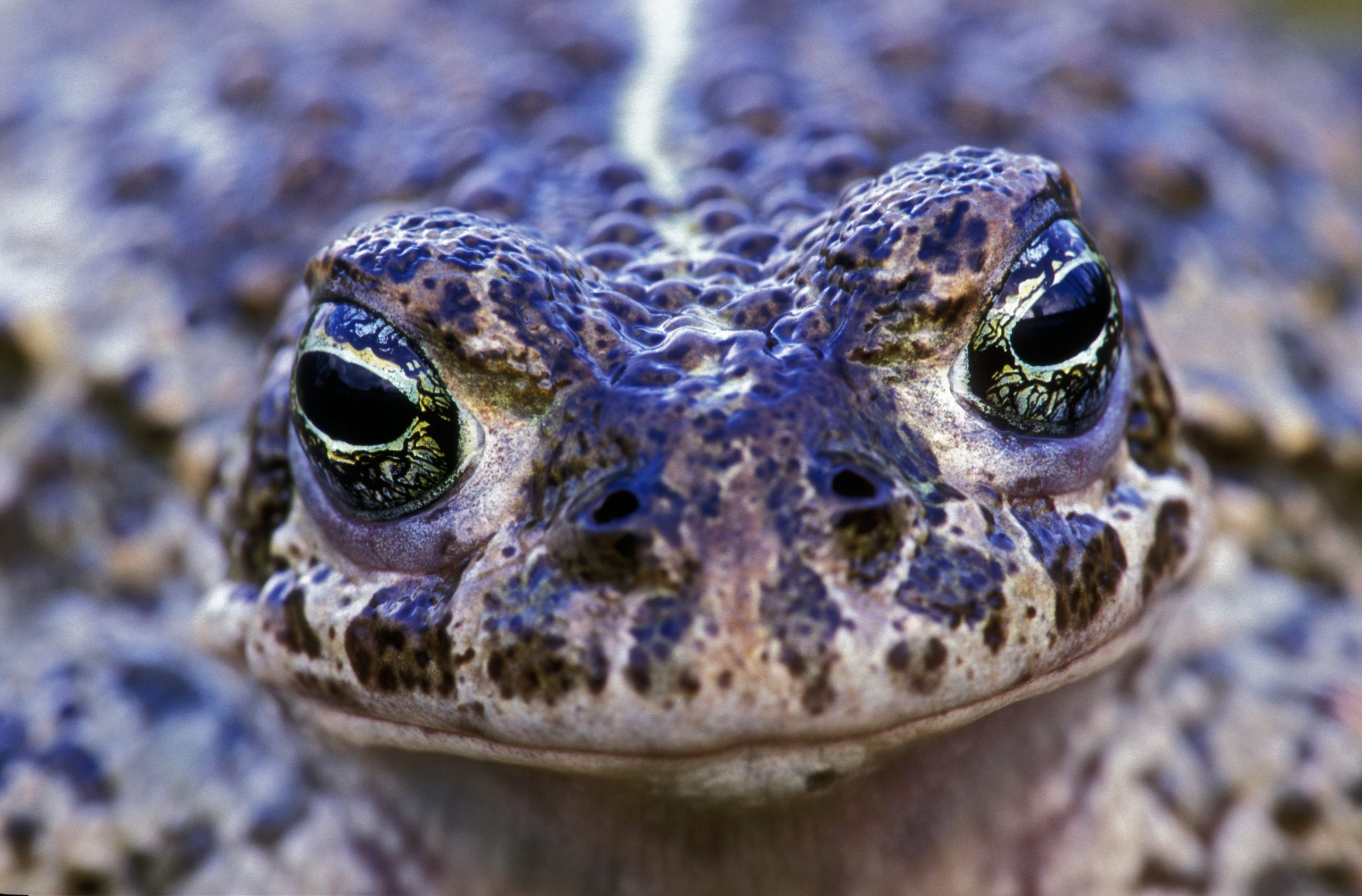The secret life of toads, from frenzied procreation to hunting snakes in the night
Despite their semi-webbed feet, warty skin and bulging eyes, toads are more endearing than Shakespeare’s witches would have us believe, says Simon Lester.


'Poop, poop!’ Imagine the scene, as the eccentric, narcissistic Mr Toad comes careering around the corner dressed in gaudy Harris tweed, behind the wheel of his bright-red sports car. The toad portrayed in Kenneth Grahame’s The Wind in the Willows is a far cry from the real Mr Bufo bufo, the common toad, although it is ironic that Mr Toad’s reckless addiction to automobiles is one of the creatures’ main perils.
Far from gaudy in real life, this mottled-brown amphibian waddles about on short, stout legs — warts and all — unlike the more athletic, sleek frog, which propels itself by hopping and the occasional leap. A toad has semi-webbed feet and long toes, whereas his hopping mate’s feet are fully webbed.

Intriguingly, toads spend most of their lives out of water, hiding during the day and only appearing from their lair — under a stone, log or pile of leaves — at dusk to hunt prey.
Their raised, bulging eyes ensure exceptional night vision, which is further enhanced by a long, sticky tongue, even if they still have to stealthily sneak up on prey in order to snaffle it up. The morsel, which may be one of many invertebrates, is swallowed whole because there are no teeth within their large gape. Nevertheless, it is said that a large toad (likely a female) is, quite remarkably, capable of eating harvest mice, small grass snakes and slow-worms.

Mr and Mrs Toad are a true gardener’s friend, fond as they are of predating on a host of wee beasties that feast on cherished plants. They are, therefore, to be welcomed and encouraged, with the overuse of pesticides carefully considered.
The common toad overwinters rather than hibernates and will come out to feed if conditions allow. All this changes come spring, when warmer weather makes them more active and triggers more Toad of Toad Hall-like obsessive behaviour in the form of an overwhelming desire to procreate.

When conditions are right, such as a mild wet night in February, toads migrate back to their birth ponds. There they indulge in plenty of jostling and aggression, coupled with singing; the males make more of a high-pitched squeak than a croak, with the girls choosing the guy with the loudest voice.
Exquisite houses, the beauty of Nature, and how to get the most from your life, straight to your inbox.
Eventually, this mass gathering descends into a full-blown orgy of writhing toads, with the little males clinging to the backs of the larger females, aided by the nuptial pads on their feet.
"I proudly presented the great mass of copulating toads. My giggling class-mates loved it"
This loving embrace is called amplexus and can last for many days — the process can be very comical, as, in this sex-fuelled state, males may latch on to heads, legs and even other males. Once they have managed to choose one female, however, they cling to her until she releases long strings of spawn, at which point the boys release their sperm and the next generation of toads is on its way.
Back in the 1960s, when I was a boy at East Bridgford primary school in Nottinghamshire, I asked if I could lead a nature walk to show the class and the teacher the breeding toads I had found in a massive pond left behind after the River Trent had flooded. When we eventually arrived, after a two-mile walk, I proudly presented the great mass of copulating toads. My giggling class-mates loved it.

Sadly, these spectacles are now much harder to witness, as common toads are in persistent decline. Research by the charity Froglife and the University of Zurich has shown that common-toad populations have plummeted by 68% across the UK during the past 30 years, due to habitat loss and fragmentation, pollution and climate change.
After mating, the adult toads depart the pond, leaving myriad polka-dot black egg strings of up to 10ft in length to mature and grow. Depending on local conditions, it can take from two to four weeks for tadpoles to appear.
"It isn’t only humans who are wary of these creatures — dogs seem to be pretty cautious, almost startled"
Once hatched, they feed like mad, often moving around in a big black mass that can be glimpsed in the warmer shallows of ponds and puddles. At about six weeks, they begin to metamorphose, with stumpy back legs appearing.
At 16 weeks, the process is complete and a host of perfectly formed toadlets — now breathing via lungs instead of gills — prepares for the off. On a wet night, the toadlets begin to move en masse, when they resemble a carpet of tiddly, toddling toads — a natural phenomenon that once led people to believe that they fell from the sky and added to the superstitions already surrounding the amphibians.
It isn’t only humans who are wary of these creatures — dogs seem to be pretty cautious, almost startled, too. I love them, but perhaps it’s their warty skin, unusual habits and mass migrations that have consigned them to the darker side of the animal kingdom, where they’re often associated with witchcraft and superstition.
The spell cast by the witches in Macbeth clearly made use of the toad for evil intent:
Round about the cauldron go; In the poison’d entrails throw. Toad, that under cold stone Days and nights hast thirty one Swelter’d venom sleeping got, Boil thou first i’ the charmed pot.
The toad also features in As You Like It, alluding to a commonly held belief about a jewel supposedly found in the amphibian’s head, which, when mounted in a ring, would warm up and change colour in the presence of venom, thereby protecting the wearer from foul play. On the other hand, George Orwell describes the emergence of the common toad as the most moving sign of spring.
Fortunately, growing numbers of people now try to help toads at their most vulnerable time of year, when they attempt to make their way across roads.
It is estimated that 20 tons of toads are squashed each and every year. This figure has motivated volunteers, who, at night, become lollipop ladies, men and children in an attempt to afford toads, frogs and newts safe passage across busy thoroughfares. ‘Poop, poop!’ Keep your eyes on the toad.
Britain's other Bufo: The mysterious Natterjack toad (Bufo calamita)

Measuring about 21⁄2in, the natterjack toad — Britain's only other species — is smaller than the common toad, with a greener, smoother and shinier skin, together with a distinctive yellow stripe down the middle of its back. The biggest distinguishing feature is that natterjacks are far more vocal than common toads, hence the name — their loud, chirruping love song can be heard on warm spring nights.
The fact they prefer to live in sandy, dry areas, such as heathland and dunes — where they burrow into soft sand and venture out at night to hunt for small insects — means they are a lot rarer, too.
They are fond of spawning in shallow pools, which warm up easily, making it a risky business — particularly due to climate change. There is always a danger that, in a dry spring, these watery breeding grounds will completely shrivel up, leaving the spawn or tadpoles literally high and dry, making them more vulnerable to predation or desiccation.
Happily, the natterjack is hanging on where the habitat is favourable, with thriving colonies in southern Scotland, north-west England — on the Merseyside and Cumbrian coasts — as well as East Anglia and some of the southern heaths in England.
Country Life is unlike any other magazine: the only glossy weekly on the newsstand and the only magazine that has been guest-edited by His Majesty The King not once, but twice. It is a celebration of modern rural life and all its diverse joys and pleasures — that was first published in Queen Victoria's Diamond Jubilee year. Our eclectic mixture of witty and informative content — from the most up-to-date property news and commentary and a coveted glimpse inside some of the UK's best houses and gardens, to gardening, the arts and interior design, written by experts in their field — still cannot be found in print or online, anywhere else.
